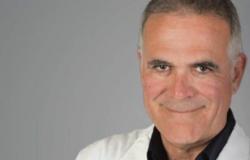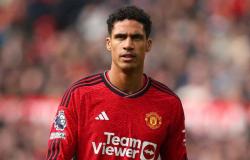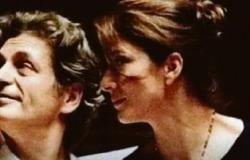This evening Joe Biden And Donald Trump they will compete in a television debate that will be broadcast on CNN. Very strict rules will regulate the ring between the two: no “notes from home”, no possibility of consulting with the respective staff during commercial breaks, but above all microphones turned off while the opponent is speaking, to avoid the effect talk show shouted. Someone, in fact, will remember poor Biden forced to blurt out about the broken record Trump, ordering him to shut up once and for all.
A gut predilection, that of Americans for wrestling politic, which is intimately linked to the history of TV. The cathode ray tube, in fact, transformed the political debate forever, electing secondary elements such as the looks, telegyny, irony, quick wit. All qualities that do not necessarily make a good president, but a champion of the media does. A very risky method that exposes you to unforgivable slips. As in 1976, when the president in office Gerald Ford announced that the US government did not consider countries such as Poland or Yugoslavia to be crushed by Soviet hegemony. An unforgivable gaffe for which he paid dearly in the polls and in the vote. The same fate befell George Bush Sr, who made two bad impressions in the first debate of 1992: several times he did not understand the questions asked of him and very often he was caught nervously looking at his watch. Eight years later, in 2000, the presidential television duel saw the Democratic candidate as the protagonist of impatient sighs Al Goreaccused of behaving like a know-it-all and rude, leaving the victory to Bush Jr.
When you think of the history of presidential duels on TV, the first image that comes to mind is the clash Kennedy-Nixon in 1960. Very few know, or remember, that the first televised debate took place four years earlier, when Adlai Stevenson challenged Dwight Eisenhower: However, the two men did not appear in the debate. Instead, on November 4, 1956, two of their replacements debated on TV: for the Democrats, the former First Lady and party icon Eleanor Roosevelt; for Republicans, the senior senator from Maine, Margaret Chase Smith. In 1956 Margaret Chase Smith was in her second term in the Senate and she had known Eleanor Roosevelt for two decades. “I respected and admired Mrs. Roosevelt for her intelligence and active leadership“, Smith will write in his autobiography. Smith had been a frequent visitor to the White House during Roosevelt’s time and had appeared on the First Lady’s radio show. Both had columns in periodical newspapers and by 1956 regularly appeared on lists of America’s most admired women.
The debate forum was the CBS program Face the Nation , then in its second season: it was the first time a woman had appeared on that program. Although Smith was still unsure of her debating skills, she was confident she could offer a strong argument in support of Eisenhower. A two-minute closing statement was opted for, although CBS reluctantly agreed. Wardrobe and hairstyle choices were scrutinized with surgical attention. You had to be energetic but polite, informed but modest.
The debate took place two days before the election and focused almost entirely on foreign policy issues. As expected, Smith remained poised and taciturn, which allowed Roosevelt to dominate, until the closing statements. Tensions arose between the two viragos, so much so that Eleanor Roosevelt refused to shake hands after the debate.
Do you want to receive our newsletters?
That first duel demonstrated that preparation mattered up to a certain point: the winner was those who knew pierce the screen. The new medium of television was undergoing a boom not only in the USA, but throughout the world. But how did that historic debate come about? In 1960 both candidates had something to prove and a lot to lose: on the one hand, Senator Kennedy, young, handsome, scion of one of the richest families in the East Coast, he had to demonstrate that he was not a recommended person, or worse, a second choice (as, in fact, he was). On the other side, Nixon, a man of the middle classEisenhower’s historic vice president, had to prove that he was not “the eternal second”. The premises were good: Kennedy was a stage animal and Nixon a great and wise orator.
In 1960, the dueling operation was taken over by the three major broadcasters. There CBS, which sponsored the first; from the NBC, which sponsored the second; from the ABC which sponsored the third and fourth debates. Both candidates accepted and presented a reasonable number of requests to ensure that everything was carried out impartially. Experienced journalists were chosen: they could ask questions to both candidates; in particular in the first and fourth debates both were able to make opening statements before the journalists began with their questions.
If Kennedy was considered the winner by those who followed the debate on TV, everyone who listened to the duel on the radio believed that Nixon had defended himself better. On that occasion new elements leapt to the eyes of public opinion: the hands (trembling or still), the face (sweaty or relaxed), the looks and gestures. It is no coincidence that, in the first duel, the whole of America fixed in its mind the contrast between Kennedy’s dazzling smile and Nixon’s sweaty, badly shaved face. Kennedy’s televised triumph (followed by a narrow victory, however) marked American history so much that, for the next sixteen years, no presidential candidate had the courage to face his opponent on TV again.
Forty-four years later, once again, Americans and the world are preparing for a new election season. In the ring, two caryatids who are running to lead the nation (and the world). After June 27, a new clash is scheduled for September 10 on ABC. Get the popcorn ready, it’s definitely 1960.
Give us one more minute of your time!
If you liked the article you just read, ask yourself: if I hadn’t read it here, could I have read it elsewhere? If there was no InsideOver, how many wars forgotten by the media would remain so? How many reflections on the world around you couldn’t you do? We work every day to provide you with quality reports and insights completely free of charge. But the type of journalism we do is anything but “cheap”. If you think we are worth encouraging and supporting, do it now.





